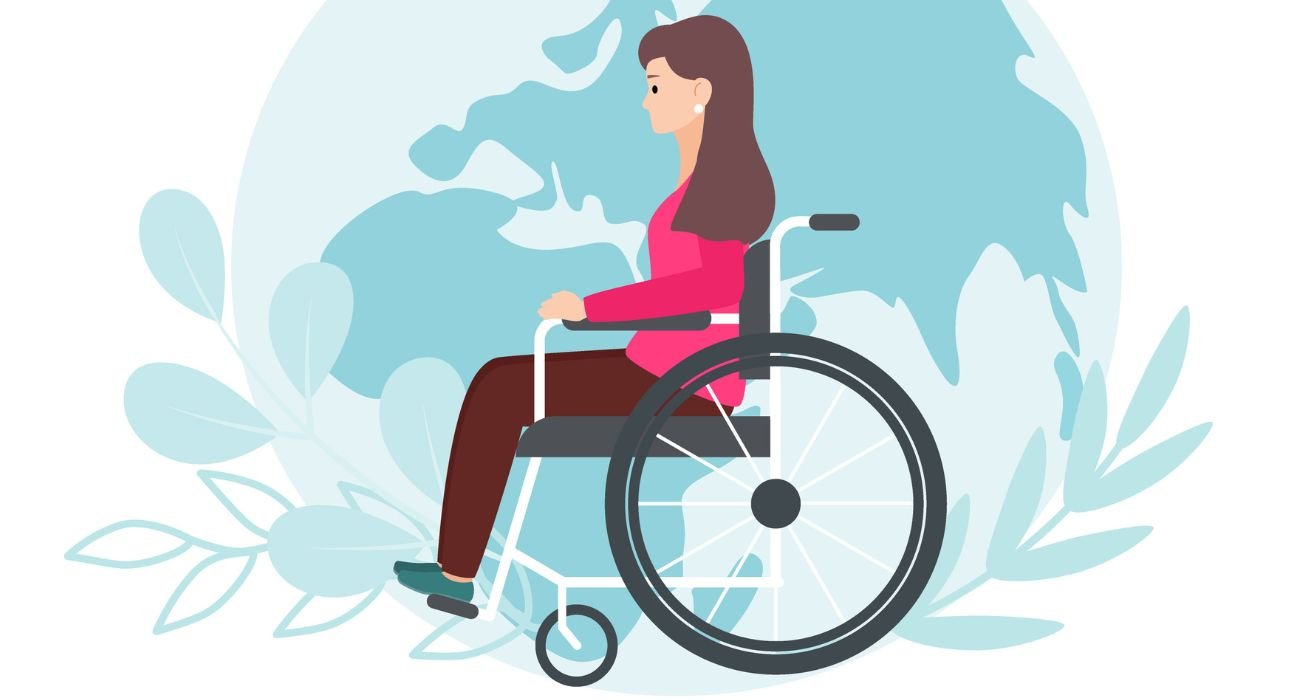“Just suppose this situation, Nina ( name changed), a young woman from a small town who lived with a chronic illness that causes severe fatigue and pain daily. She struggles to work, socialise and even perform simple tasks. When she tries to apply for government benefits under India’s Rights of Persons with disabilities Act (RPWD) 2016, she faces an unexpected hurdle that her condition is not among the 21 recognised disabilities. Despite her challenges, she is left without legal recognition, without access to support and without a voice.”
This story is not unique; rather, thousands of Indians live with disabilities or other chronic health conditions that fall outside the narrow categories listed in the RPWD Act. While the law was a historic step forward. Its limited list of recognised disabilities raises a critical question. Are these 21 disabilities truly representative of the diverse experiences of disability in India?
When India passed the Rights of Persons with Disabilities Act (RPWD) in 2016, it was hailed as a landmark law aimed at ensuring dignity, rights and inclusion of persons with disabilities (PWDs ). The act identified 21 specific disabilities and promised to provide support, equal opportunities and protection from discrimination. But as we step into the real world, a question emerges: Is limiting the recognised disabilities to just 21 enough? Does this list reflect the full spectrum of human experiences with disability?
Let’s explore why this list might fall short and what can be done to make India’s disability laws truly inclusive.
Read More: Spoon Theory: A Metaphor for Understanding Life with Chronic Illness
Background Of RPWD 2016
The 2016 Act replaced the Persons with disabilities( Equal Opportunities, Protection of Rights and Full Participation) Act 1995. This act brings it closer to global standards set by the United Nations Convention on the Rights of Persons with Disabilities (UNCRPD). It broadened the definition of disability and introduced new provisions aimed at eliminating discrimination, promoting accessibility and ensuring equal opportunities(Government of India, 2016)
Among its many features, RPWD 2016 officially recognises 21 types of disabilities, including blindness, hearing impairment, autism spectrum disorder, cerebral palsy, intellectual disabilities and even acid attack victims. This was a big step forward aimed at covering a broad range of conditions( Government of India, 2016). This categorisation aims to cover a wide range of disabilities. It raises the question of whether it is comprehensive enough. Unfortunately, not quite.
Read More: Understanding Mental Health Governance in India
Limitations of Recognising Only 21 Disabilities
1. Exclusion of Certain Disabilities
The RPWD Act’s list, while extensive, includes various types of disabilities that affect individuals. Disabilities such as chronic illness (other than those listed like thalassemia and sickle cell anaemia), rare genetic disorders and unpredictable social disabilities beyond “mental Illness” are not explicitly recognised (Singh & Chaturvedi, 2020). This exclusion limits access to benefits and protections for persons with these disabilities.
For Example, Someone living with Epilepsy, diabetes complications, chronic fatigue or rare genetic conditions. These are real, often debilitating challenges that impact daily life but don’t neatly fit into the 21 categories listed. ( world Health Organization[WHO],2021) The absence of these conditions in the legal framework creates ambiguity and denies affected individuals essential legal safeguards.
Read More: 10 Tips to Deal with Childhood Epilepsy
2. Ambiguity in Defining Certain Disabilities
The act categorises broad disabilities such as “mental health issues “ and “Intellectual and developmental conditions” without detailed definitions, creating difficulties in their practical application. Mental health advocates argue that “mental illness” is an umbrella term encompassing diverse conditions, each requiring different interventions and legal recognition. (Patel et al.,2018) Moreover, disabilities such as chronic pain, fatigue disorders and neurodiverse conditions beyond autism spectrum disorder(ASD). Learning differences lack clarity in the Act, which complicates disability certification and support mechanisms (Singh & Chaturvedi,2020).
Read More: Modern interventions for the treatment of Autism Spectrum disorder
3. Overemphasis on the Medical Model of Disability
The RPWD Act largely follows a medical model that focuses on diagnosis and impairment, rather than the social model, which emphasises societal barriers and discrimination ( Shakespeare,2014). The list of 21 disabilities tends to emphasise physical and visible impairments, neglecting the social and environmental dimensions of disability.
For instance, someone with a temporary mobility issue or fluctuating chronic illness may face major social exclusion yet still not qualify under the Act’s medical criteria ( Mitra,2018). This undermines the goal of social inclusion.
4. Complexity In Certification and Assessment
The Act mandates disability certification for availing rights and benefits. However, the categorisation into 21 disabilities leads to complex medical evaluations. Often requiring specialised assessments that are not uniformly available across India. ( Kumar et al. , 2019) Persons with less common disabilities struggle to obtain certification, which hinders access to government schemes, reservations and social security.
Additionally, the Act’s definition is “multiple disabilities” can be ambiguous, leading to bureaucratic challenges in identifying and certifying persons with overlapping disabilities. ( Government of India, 2016)
Importance of an Inclusive and Flexible Framework
Disability is a diverse and dynamic phenomenon. The World Health Organisation’s International Classification of Functioning, Disability and Health ( ICF ) framework underscores that disability results from the interaction between health conditions and contextual factors (WHO,2001). Hence, any legal framework should reflect this complexity.
Broadening What Counts as Disability
Many disability rights activists and scholars have called for a broader, more inclusive definition of disability, the recognised categories or adopting a more inclusive definition that considers important, one that goes beyond medical conditions to also consider limitations in any daily activities, barriers to participation and the role of societal attitudes and environments. ( Shakespeare, 2014; Mitra, 2018). For instance, psychosocial disabilities linked to long-term mental health conditions should be recognised beyond the term ‘mental illness’ to reflect their nuances. ( Patel et al., 2018)
Incorporating Emerging Disabilities
New disabilities related to environmental changes, such as those caused by pollution, workplace hazards or digital technology ( e.g., repetitive strain injury, vision problems from prolonged screen use), require attention( Singh & Chaturvedi,2020). The static list of 21 disabilities may not be sufficient to cover these emerging challenges.
Read More: 10 Tips for Maintaining a Positive Workplace Environment
Comparative Perspectives: International Disability Laws
Countries like the United States, with the Americans with Disabilities Act (ADA, 1990) and the United Kingdom, with the Equality Act (2010), adopt broader definitions and emphasise functional limitations and social barriers rather than fixed lists of disabilities. (Barnes & Mercer,2010) India’s RPWD Act, while progressive, could benefit more from a functional and rights-based approach that allows for flexibility and inclusiveness.
Recommendations for Addressing the Gaps
Some important recommendations are:
- Revision of Disability Categories: The government should regularly update and expand the list of recognised disabilities to include more chronic illnesses, unpredictable social disabilities and emerging conditions.
- Functional Assessment: Instead of only looking at medical diagnosis, assessment should consider how disabilities affect a person’s ability to function and participate in society. Models of disability in assessment criteria to capture the lived experiences of persons with disabilities beyond medical diagnosis ( WHO, 2001).
- Barrier-Free policy planning: People with disabilities and their representative organisations should be actively involved in policy making process, to ensure diverse needs are addressed by the government.
- Awareness and Capacity Building: Doctors, officials and service providers need better training to understand the wide range of disabilities and support people accordingly. train medical professionals and administrative staff on the broad spectrum of disabilities and complexities of certification( Kumar et al., 2019).
- Clear Legal Interpretations: Provide detailed guidelines and definitions for ambiguous categories like mental health issues and multiple disabilities to facilitate better implementation.
Conclusion
The Rights of Persons with disabilities Act 2016 (RPWD) marked a remarkable step in recognising and protecting the rights of individuals with disabilities in India. However, its scope remains limited by the fixed list of 21 recognised disabilities, which fails to capture the full spectrum of human diversity and the social realities that many people face. In India, where disability intersects with caste, class, gender, and geography, rigid categories often lead to exclusion.
My invisible evolving or unpredictable social disabilities, like chronic fatigue syndrome, sensory processing disorder and certain mental health conditions, remain outside legal recognition. This exclusion affects access to resources, education, employment, healthcare and social acceptance. The law’s uneven implementation across states often leaves already marginalised people at an even greater disadvantage.
For the RPWD Act to truly live up to its intent, it must adopt a more dynamic, inclusive and rights-based approach. This includes recognising a wide range of impairments, involving disability communities in policy making, and ensuring robust implementation. Disability isn’t a fixed checklist but a lived experience shaped by society’s barriers. The future of disability rights in India depends not just on laws but on shifting societal attitudes and structures toward true inclusion.
References +
Barnes, C., & Mercer, G. (2010). Implementing the social model of disability: Theory and research. Disability & Society, 25(2), 145-159.
Government of India. (2016). Rights of Persons with Disabilities Act, 2016. Ministry of Social Justice and Empowerment.
Kumar, S., Singh, A., & Sharma, P. (2019). Challenges in disability certification in India. Indian Journal of Public Health, 63(3), 222-227.
World Health Organisation. (2001). International Classification of Functioning, Disability and Health (ICF). WHO.
Patel, V., Saxena, S., Lund, C., Thornicroft, G., Baingana, F., Bolton, P., … & UnÜtzer, J. (2018). The Lancet Commission on global mental health and sustainable development. The Lancet, 392(10157), 1553-1598.
Shakespeare, T. (2014). Disability rights and wrongs revisited. Routledge.
Singh, A., & Chaturvedi, S. (2020). Beyond the medical model: Rethinking disability policy in India. Journal of Social Inclusion Studies, 6(1), 45-60.
World Health Organisation. (2021). Disability and chronic diseases. WHO.
John, T., Subramanyam, A. A., & Sagar, R. (2018). Strengths and weaknesses of the guidelines of the Rights of Persons with Disabilities Act, 2016 (dated January 5, 2018): With respect to the persons with neurodevelopmental disorders. Indian Journal of Psychiatry, 60(3), 261–264. https://doi.org/10.4103/psychiatry.IndianJPsychiatry_326_18
Math, S. B., Gowda, G. S., Basavaraju, V., Manjunatha, N., Naveen Kumar, C., Philip, S., & Gowda, M. (2019). The Rights of Persons with Disabilities Act, 2016: Challenges and opportunities. Indian Journal of Psychiatry, 61(Suppl 4), S809–S815. https://www.ncbi.nlm.nih.gov/pmc/articles/PMC6482682/ [2]
Gupta, R. K. (2024). Rights of Persons with Disabilities Act (2016): A critique. Journal of Disability Studies. https://pubs.iscience.in/journal/index.php/jds/article/view/643













Leave feedback about this